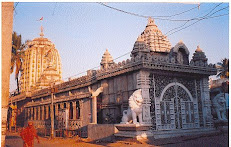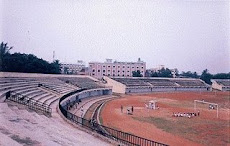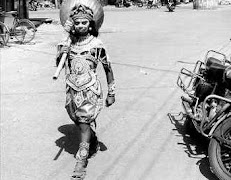Looking for the perfect weekend getaway? Jaideep Deo Bhanj visits Gopalpur-on-Sea to find that it’s not just a sleepy fishing town
Gopalpur-on-Sea is the kind of a place you would rather not
tell people about. Once the word spreads, after all, the sound of the ocean may
be drowned by noisy tourists. The endless expanse of soft, golden sand, calm
waters and a beach without litter is paradise for those used to the din,
garbage and stench of the beaches in Vizag.
While taking a walk on the beach at sunrise you find that the
only company you have are the fishermen bringing home the catch of the day.
Strike a conversation and he will sell you the freshest ingredients for your
lunch or may even offer to take you for a ride in his boat. Bob around in the
blue waters all day, chase crabs, build a sandcastle or just enjoy the calm.
Gopalpur-on-Sea is the perfect weekend getaway from the city.
Gopalpur was a bustling port when the East India Company was
trading with Burma. It has since become a sleepy fishing village.
The promenade has a line of tiny hotels catering to the
budget traveller. The biggest attraction apart from the beach is the quaint
lighthouse on one end of the beach. It was set up in 1871 and has an Enid
Blyton feel to it. At night the light shines every five seconds, which gives
the place a unique glow.
Heritage
The town became famous as a tourist destination when a young
Italian, Signor Maglioni from Sicily, established the Palm Beach in 1914. In
Gopalpur’s glory days between the two World Wars, rich Bengali families,
British traders and soldiers frequented Maglioni’s hotel. In 1947, Rai bahadur
M.S Oberoi, on a chance visit to what had again become a fishing village,
bought the hotel. He renamed it ‘Oberoi Palm Beach’ and opened its doors to the
who’s who of the country. By 2002 the Oberoi group shut down the hotel as it
had become quite dilapidated.
Today the Mayfair group owns this historic property. It was
renovated and reopened in December as The Mayfair Palm Beach Resort. The hotel
has managed to preserve the heritage of Gopalpur-on-Sea and may revive the
town’s reputation as a luxury destination.
Beach festival
Every year between December 24 and 28 a beach festival is
organized. The weather is perfect at the time and as the festival coincides
with the holiday season it attracts a number of tourists from West Bengal.
Every Sunday there is also a cultural programme organized on the beach.
Gopalpur is an hour’s drive from Chilka Lake, which is
visited by thousands of migratory birds every year. An early boat ride in the
lake in the winter is a nature lover’s dream come true. You can spot Irrawady
dolphins swimming along with your boat if you are lucky. Taptapani, a hot water
spring famous for its medicinal qualities is another attraction that is a hot
favourite with the locals. The Rushikulya Rookery located 45 minutes away is
known for the endangered Oliver Ridley turtles that come here to lay eggs every
year. Visitors can even take a boat ride and see the turtles mating in the
water. Trips to see the migratory birds and turtles need to be planned well as
you can see them only in season. But the birds and the turtles all do come back
every year. They can’t be wrong, can they?
Places to stay
The 99-year-old resort now known as the Mayfair Palm Beach
Resort, with its suites and plunge pools, is what put Gopalpur on the map. The
Swosti Palm resort is a mid-range hotel popular for its sea food. There is also
the OTDC Panhanivas to suit every budget.
Getting there
It is advisable for people from Vizag to drive down in a taxi
or their private cars as the NH 5 is an excellent road. Also, trips to Chilka
and other surrounding areas are easier with your own vehicle. Take the NH 5
towards Berhampur. Look out for a turn to your right after crossing Ichhapuram.
It is 10.5 km from the highway. If you are attentive, you won’t miss the
turning. Berhampur is the nearest railway station 16 km away.
Season
October-April is the best time to visit as the summers are
hot and sultry. December-January is the best time for spotting migratory birds.
Source: The Hindu
.jpg)

















.jpg)


















































No comments:
Post a Comment